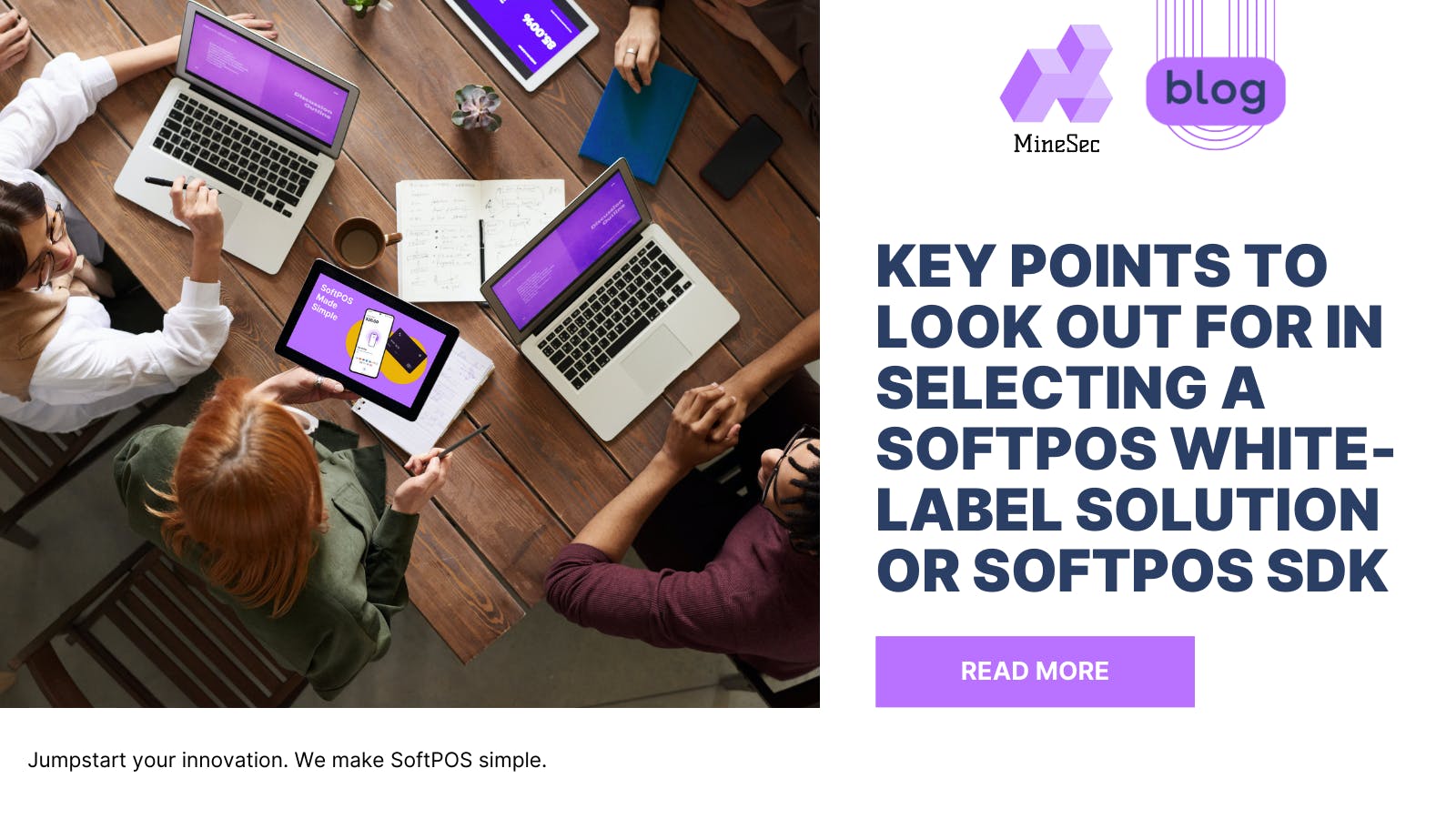SoftPOS offers a convenient and cost-effective way for merchants to accept contactless payments by turning smartphones and tablets into payment terminals. According to a study by Juniper Research, the SoftPOS user base is predicted to grow 475% globally by 2027 – driven by the increasing use of contactless payments and Apple’s entrance into SoftPOS, enabling 1.2 billion iOS users to access this technology.
Payment service providers (PSPs) are poised to take advantage of this trend but with so many SoftPOS solution providers in the market, it can be difficult to identify the right SoftPOS approach. In this blog article, we will discuss the key points to look out for in your SoftPOS journey.
In-house or outsource?
Deciding whether to develop your own SoftPOS solution in-house or outsource to a third-party vendor will be one of the first decisions you need to make.
In-house development can give you more control over the technology and features, but it can also be expensive and time-consuming. You need to not only assemble a team of software engineers, security experts, and product managers, but also invest in testing and development hardware, as well as other infrastructure. You will also need to stay up-to-date with the latest industry standards and regulations.
Outsourcing to a vendor can often be a more cost-effective and time-saving option. When doing so, it is important to choose a vendor with a proven track record and a deep understanding of the SoftPOS market. Consider the vendor’s experience, track record, and the features and functionality of their solution which can enrich the user experience of your SoftPOS offering. Check that the vendor's solution is certified to meet both industry and market standards which can reduce your time to market greatly.
SoftPOS vendor selection
If you have decided to outsource your SoftPOS development, you need to start evaluating potential vendors. Key factors to consider include:
- Capabilities: Make sure the vendor's solution has the features and functionality that you need. This includes support for different types of contactless payments, as well as value-added features that appeal most to your target users.
- Solution roadmap: Ask the vendor about their plans for future development. You want to make sure that they are committed to innovating and keeping their solution up-to-date with the latest industry trends.
- Engagement: How engaged is the vendor with their customers? Do they listen to feedback and make changes to their product based on customer needs?
- Certifications: Make sure the vendor and their solution have the right certifications.
- SDK vs. White-label Solution: If you are planning to develop your own app, you will need to decide whether to use the vendor's SDK or their white-label SoftPOS solution. SDKs provide more flexibility, but they can also be more complex to integrate.
SDK vs. White-label Solution: Navigating the SoftPOS Choice for PSPs
You will also need to decide whether to use the vendor's SDK or their white-label SoftPOS solution. Carefully consider the distinct advantages and challenges presented by both before moving forward. Key factors to consider include:
By carefully weighing these factors and aligning them with your specific business goals and resources, you can make an informed decision between a SoftPOS SDK and a white-label SoftPOS solution. Remember, there's no one-size-fits-all approach; the optimal choice lies in finding the solution that empowers you to thrive in the evolving mobile payments landscape.
Partnering for success
Choosing the right SoftPOS approach is a critical decision. Assess the vendor's technical expertise, support quality, and commitment to innovation. By taking the time to carefully evaluate your options, you can ensure that you choose a reliable and future-oriented partner, and a SoftPOS solution, that will help you succeed in the payments market.
Download MineSec White-label SoftPOS Suite brochure or SoftPOS SDK brochure now!
